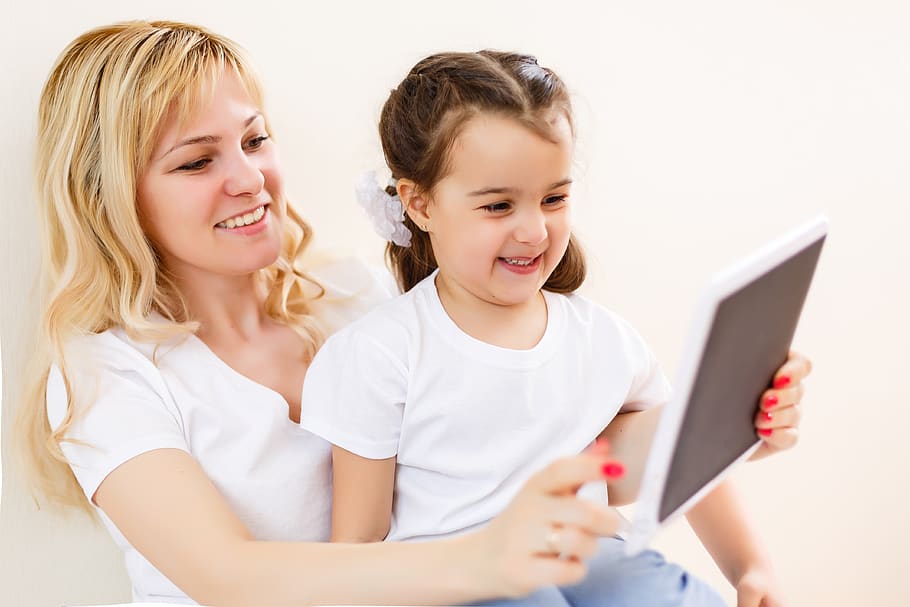With more and more schools shutting in the wake of the Coronavirus outbreak, teachers are taking their lessons online as students are kept at home. The transition from school-based learning to online, remote learning certainly makes it a stressful and confusing time for teachers, school administrators and students, but what about parents? Here are some tips for mums and dads to cope with remote learning.
Getting to grips with all that tech
Our children have grown up with tech and are very likely more adept at using the computer and internet than we are, but online learning tools and platforms aren’t the same as Snapchat or TikTok, and children will require support and guidance from parents as they set sail on their online learning journeys.
First the basics: ensure your child has access to a working computer. Make sure they have the charger handy if they’re using a laptop, and that it’s sufficiently reliable to last through heavy usage. Headphones with a microphone are also useful for video conferences and lessons, especially if your house is a noisier one.
Younger kids may need help installing and setting up certain software programmes, particularly if these require admin access to the computer. Certain platforms may also only be supported on certain browsers or require particular plug-ins, which kids may need your help sorting out.
Communication is key
The shift to online learning may actually make it easier for parents to keep track of their child’s progress and performance in school! Many edtech tools make it easy for teachers or students to share quiz and assignment results with parents.
Communication between parent and child, as well as between siblings who may have to share electronic devices, is also important. To prevent arguments or overlaps on the use of a computer, set up a schedule, giving priority to children who have to participate in real-time, online lessons.
Communication with your child’s teacher is just as essential. Find out what your child’s lesson schedule looks like, and if you or your child are unclear about any activity instructions, don’t hesitate to get in touch with them. Different teachers may also use different edtech tools, which can be confusing for students and parents alike. It’s handy to keep a list noting which platforms are used for which subjects, and ensure that you and your child are familiar with them.
Setting up a routine… but being flexible

A lot of online learning that takes place will be asynchronous, that is, happening at different times for different students. This is beneficial as students can work at their own pace and take breaks as needed, but also tricky because it’s easier for students to fall behind if they don’t keep up with daily lessons and assignments.
Work out a feasible, comfortable timetable for your child, scheduling set times to complete homework and assignments, so that there is some structure and discipline in their day. At the same time, teachers’ online learning plans may change, so be prepared to be flexible with your child’s schedule as well.
Minimizing distractions
Just as children benefit from a solid routine, so too do they learn best in a conducive environment. If possible, situate the computer or tablet your child will be using for remote learning in a room without distractions, such as the television or pets who may be distracting.
It’s also useful to set a few ground rules on the use of the internet during periods of remote learning, and clearly separate “learning time” from “leisure time” (social media, online TV, etc.).
Online safety and decorum
Most children are confident users of the internet, but using the internet for fun as they usually do is different from using it from proper learning. Remind your children to behave appropriately online with their teachers and peers as they would in school, and to ensure that all communication is conducted in private and secure chat platforms.
For safety, students should also keep their doors open when video conferencing with other students or teachers, especially for 1:1 online meetings.
Check out Microsoft’s online safety resources for parents here.
Being positive but realistic
Practical and academic-related matters aside, school closures because of Coronavirus may have an adverse impact on a child’s emotional and mental well-being. It’s only natural for children to be worried, particularly when such a drastic change like a school closure occurs, throwing off their sense of routine and familiarity.
Speak to your child about their thoughts and feelings on Coronavirus and the school closure, reassuring them that the school closure is an act of precaution, rather than a reason to panic. This is also a useful opportunity to get your child more engaged with current affairs by keeping up-to-date on the spread and repercussions of the virus, and having discussions with them on it.
Seek support

Unfortunately, not all parents have the time or resources to fully support their child in remote learning. If alternative childcare arrangements cannot be made, it is worth speaking to your employer to see if more flexible working arrangements may be possible in light of the current pandemic.
Hardware or software issues may also pose hurdles to remote learning for many children. Speak to your child’s teacher to see what support they can offer, as their school may be able to loan laptops or wifi hotspot devices to ensure no students miss out on their education.
Remember: it takes time!
The first few days of remote learning may be a frenzy, but don’t lose heart! Just like you, your children need time to get used to a new routine, and so do their teachers. Don’t let teething problems (and trust me, there will be a few!) with e-learning frustrate you or your child. In fact, you may find that your child thrives on online learning, or finds it a welcome change!
Are you a parent or teacher affected by a school closure? We’d love to hear any tips or advice you may have.

